About Authors:
Satinder Kumar
Manav Bharti University,
Solan (H.P)
skcrock87@yahoo.in
Abstract:-
Validation is the most recognized and important parameter of GMPs. This article provide introduction about the process validation of pharmaceutical manufacturing process and its importance according to The U.S. Food and Drug Administration (FDA). This work is to present an introduction and general overview on process validation of pharmaceutical manufacturing process. Quality cannot be ensured by sampling, testing, release of materials and products. Quality assurance techniques must be used to build the quality into the product at every step and not just tested for at the end. Process validation of a process will ensure production of drug of reproducible quality. In pharmaceutical industry, Process Validation performs this task to build the quality into the product because according to ISO 9000:2000, it had proven to be an important tool for quality management of pharmaceuticals.
[adsense:336x280:8701650588]
Reference Id: PHARMATUTOR-ART-1269
Introduction
The concept of validation was first proposed by two Food and Drug Administration (FDA) officials, Ted Byers and Bud Loftus, in the mid 1970’s in order to improve the quality of pharmaceuticals. The first validation activities were focused on the processes involved in making these products, but quickly spread to associated processes including environmental control, media fill, equipment sanitization and purified water production.
In a guideline, validation is act of demonstrating and documenting that any procedure, process, and activity will consistently lead to the expected results. It includes the qualification of systems and equipment. The goal of the validation is to ensure that quality is built into the system at every step, and not just tested for at the end, as such validation activities will commonly include training on production material and operating procedures, training of people involved and monitoring of the system whilst in production. In general, an entire process is validated and a particular object within that process is verified. The regulations also set out an expectation that the different parts of the production process are well defined and controlled, such that the results of that production will not substantially change over time.
Why Is Validate a process:-
The main reasons for validation are
1. Quality assurance: Quality cannot be assured by daily quality control testing because of the limitations of statistical samples and the limited facilities of finished product testing. Validation checks the accuracy and reliability of a system or a process to meet the predetermined criteria. A successful validation provides high degree of assurance that a consistent level of quality is maintained in each unit of the finished product from one batch to another batch.
2. Economics: Due to successful validation, there is a decrease in the sampling and testing procedures and there are less number of product rejections and retesting. This lead to cost-saving benefits.
3. Compliance: For compliance to current good manufacturing practices CGMPs, validation is essential.
Department Responsible:-
- Site validation committee (SVC): Develop Site master Validation plan, Prepare/execute/approve validation Studies
- Manufacturing department: Prepares the batches as a routine Production batch
- Quality assurance: Ensure compliance, see that documentations/procedures are in place, approves protocols and reports
- Quality control: Perform testing and reviews protocol and report as needed.
Responsible Authorities For Validation:-
The validation working party is convened to define progress, coordinate and ultimately, approve the entire effort, including all of the documentation generated. The working party would usually include the following staff members, preferably those with a good insight into the company's operation.
- Head of quality assurance
- Head of engineering
- Validation manager
- Production manager
- Specialist validation discipline: all areas
|
Department /Designation |
Responsibility |
|
Manager Production |
Responsible for manufacturing of batches and review of protocol and report. |
|
Manager QC |
Responsible for analysis of samples collected |
|
Executive QC |
Responsible for samples collection and submission to QC |
|
Manager Maintenance |
Providing utilities and engineering support |
|
Executive Production |
Responsible for preparation of protocol and manufacturing of validation batches |
|
Manager QA |
Responsible for protocol authorization and preparation of summary report. |
Elements Of Validation:-
Qualification is pre-requisite of validation. The qualification includes the following:
1. Design Qualification (DQ):-
In this qualification, compliance of design with GMP should be demonstrated. The principles of design should be such as to achieve the objectives of GMP with regard to equipment. Mechanical drawings and design features provided by the manufacturer of the equipment should be examined.
2. Installation Qualification (IQ):-
Installation qualification should be carried out on new or modified facilities, systems and equipment. The following main points should be includes in the installation qualification.
- Checking of installation of equipment, piping, services and instrumentation.
- Collection of supplier’s operating working instructions and maintenance requirements and their calibration requirements.
- Verification of materials of construction
- Sources of spares and maintenance
3. Operational Qualification (OQ):-
Operational qualification should follow IQ, OQ should include the following:
- Tests developed from the knowledge of the processes systems and equipment
- Defining lower and upper operating limits,. Sometimes, these are called ‘worst case’ conditions.
4. Performance Qualification (PQ):-
After IQ and OQ have been completed, the next qualification that should be completed is PQ. PQ should include the following:
- Tests using production materials, substitutes or simulated product. These can be developed from the knowledge of the process and facilities, systems or equipment.
- Tests to include conditions with upper and lower limits
Process Validation:
The U.S. Food and Drug Administration (FDA) has proposed guidelines with the following definition for process validation:
Process validation is establishing documented evidence which provides a high degree of assurance that a specific process (such as the manufacture of pharmaceutical dosage forms) will consistently produce a product meeting its predetermined specifications and quality characteristics.
According to the FDA, assurance of product quality is derived from careful and systemic attention to a number of important factors, including: selection of quality components and materials, adequate product and process design, and (statistical) control of the process through in-process and end-product testing. Thus, it is through careful design (qualification) and validation of both the process and its control systems that a high degree of confidence can be established that all individual manufactured units of a given batch or succession of batches that meet specifications will be acceptable.
This guidance describes process validation activities in three stages.
Stage 1 – Process Design: The commercial manufacturing process is defined during this stage based on knowledge gained through development and scale-up activities.
Stage 2 – Process Qualification: During this stage, the process design is evaluated to determine if the process is capable of reproducible commercial manufacturing.
Stage 3 – Continued Process Verification: Ongoing assurance is gained during routine production that the process remains in a state of control.
Types of Process Validation:-
1. Prospective Validation: It is establishment of documented evidence of what a system does or what it purports to do based upon a plan. This validation is conducted prior to the distribution of new product.
2. Retrospective Validation: It is the establishment of documented evidence of what a system does or what it purports to do based upon the review and analysis of the existing information. This is conducted in a product already distributed based on accumulated data of production, testing and control.
3. Concurrent Validation: It is establishment of documented evidence of what a system does or what it purports to do information generated during implemented of the system.
4. Revalidation: Whenever there are changes in packaging, formulation, equipment or processes which could have impact on product effectiveness or product characteristics, there should be revalidation of the validated process.
Conditions that require revalidation studies are:
- Changes in critical component
- Change in facility or plant
- Increase or decrease in batch size
- Sequential batches that fail to conform product and process specifications
Change Control:-
Change control is defined as “a formal system by which qualified representatives of appropriate disciplines review proposed or actual changes that might affect a validated status. The intent is to determine the need for action that would ensure and document that the system is maintained in a validated state.”
Change control is a lifetime monitoring approach. Planning for well executed change control procedures includes the following aspects:

Validation Master Plan:-
It is important to draw up a summarized document that describes the whole project. It has become common practice in the industry to develop a “validation master plan” (VMP). This document would usually include the qualification aspects of a project.
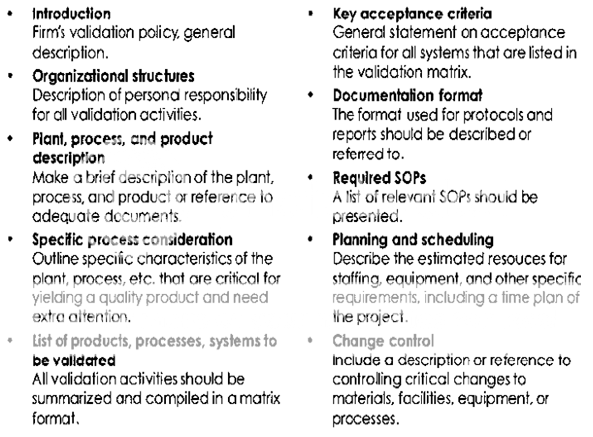
Validation Protocol:-
After preparing VMP, the next step is to prepare validation protocol. There are the following contents in a validation protocol.
1. General information
2. Objective
3. Background/Prevalidation Activities Summary of development and tech transfer (from R&D or another site) activities to justify in-process testing and controls; any previous validations.
4. List of equipment and their qualification status
5. Facilities qualification
6. Process flow chart
7. Manufacturing procedure narrative
8. List of critical processing parameters and critical excipients
9. Sampling, tests and specifications
10. Acceptance criteria
Process Overview of Tablet Manufacturing:-
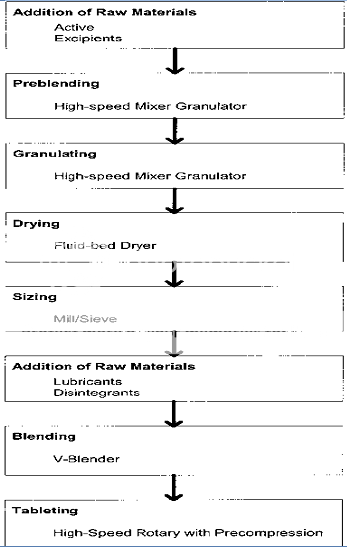
Process step, Typical Variables And Responses During Process Validation Of Tablet Manufacturing Process
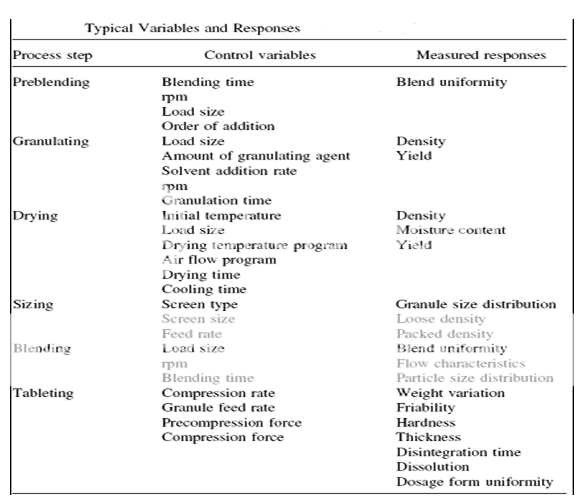
Conclusion:-
From study, it can be stated that Process validation is a major requirement of cGMP regulation for finished pharmaceutical products. It is a key element in assuring that the quality goals are met. Successfully validating a process may reduce the dependence upon intensive in process and finished product testing. Finally, it can be concluded that Process validation is a key element in the quality assurance of pharmaceutical product as the end product testing is not sufficient to assure quality of finished product.
References:-
1.Agalloco J. Validation: an unconventional review and reinvention. PDA J. Pharm. Sci. Tech. 49:175–179 (1995).
2.Aleem H, Zhao Y, Lord S, McCarthy T and Sharratt P. Pharmaceutical process validation: an overview. J. Proc. Mech. Eng. 217: 141-151 (2003).
3. Chitlange S. S, Pawar A. S, Pawar H. I, Bhujbal S. S. and Kulkarni A. A. Validation. pharmainfo.net/reviews/validation . 4: 318-320 (2006).
4. Dashora K, Singh D and Saraf S. Validation - the Essential Quality Assurance Tool for Pharma Industries. pharminfo.net. 3: 45-47 (2005).
5. Guidance for Industry: Process Validation: General Principles and Practices. U.S. Department of Health and Human Services, Food and Drug Administration, Center for Drug Evaluation and Research (CDER), Center for Biologics Evaluation and Research (CBER), Center for Veterinary Medicine (CVM), November 2008.
6.Gupta G. D, Garg R and Aggarwal S.Guidelines on General Principles of Validation: Solid, Liquid and Sterile dosage forms. pharminfo.net . 6: 28-33 (2008).
7. Haider S. I. Pharmaceutical Master Validation Plan: The Ultimate Guide to FDA, GMP, and GLP Compliance. CRC Press LLC, Boca Raton, Florida.
8.Lambert J. Validation Guidelines For Pharmaceutical Dosage Forms. Health Canada / Health Products and Food Branch Inspectorate, 2004:7-15.
9.Lingnau J. Optimization and Validation of Manufacturing Processes. Drug Dev. Ind. Pharm. 15: 1029-1046 (1989).
10. Nash R. A. and Wachter A. H. Pharmaceutical Process Validation An International Third Edition. Revised and Expanded, Marcel Dekkar, Inc., New York, 2003; 129:760-792.
11. Virmani T and Pathak K. Validation: An Essentiality in the Pharmacy. Pharminfo.net. 5:22-24 (2007).
Figures:

Figure No.1: General view of process validation
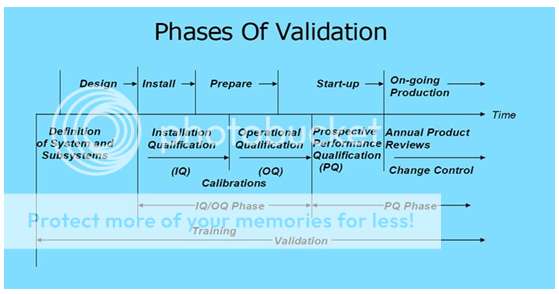
Figure No.2: Phases of Validation
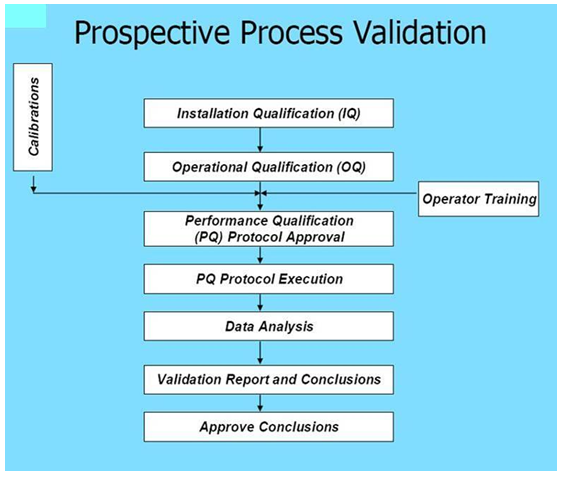
Figure No. 3: Prospective Process Validation
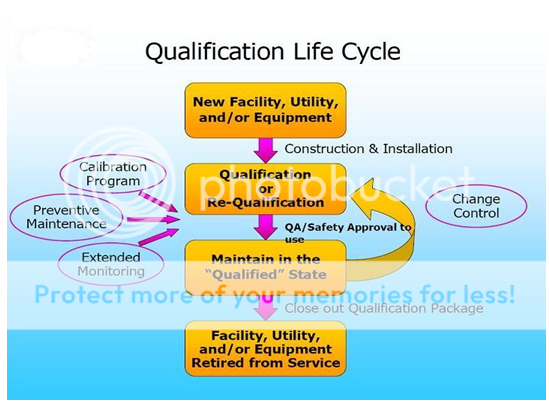
Figure No. 4: Qualification Life Cycle

Figure No. 5: Qualification and Process Validation
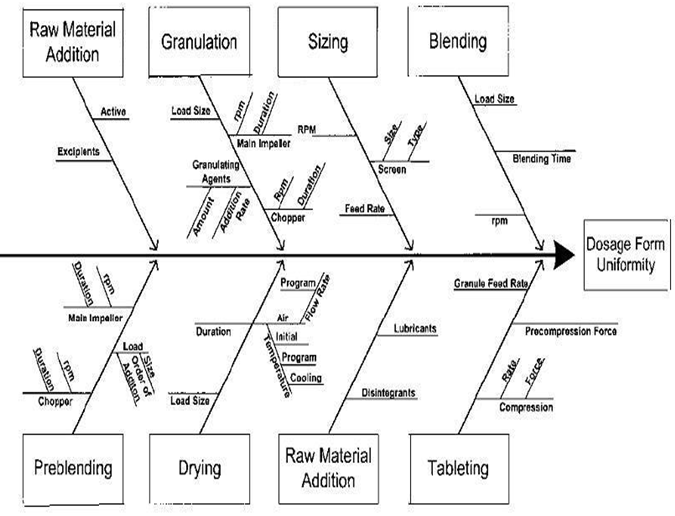
Figure: 6 Cause-and-Effect or ‘’Fishbone’’ Diagram










